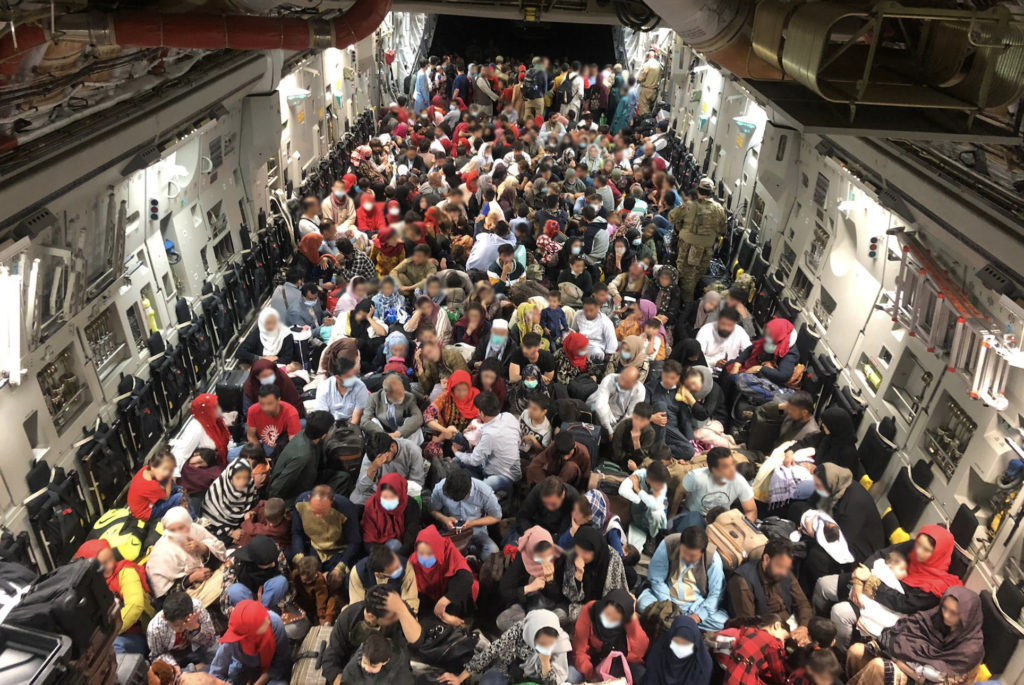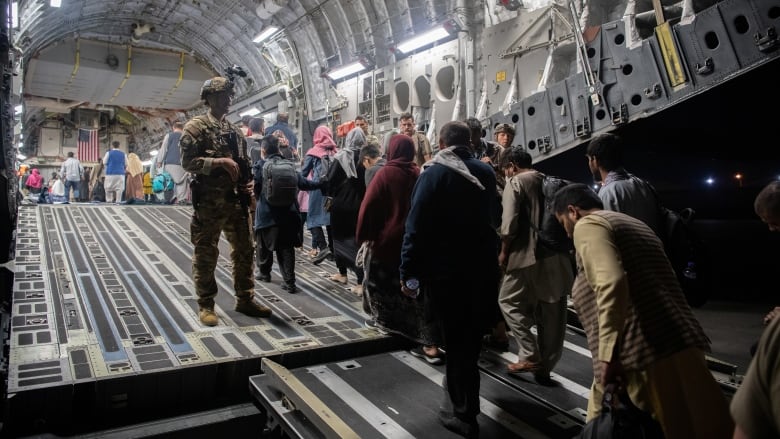Estimated reading time 4 minutes, 48 seconds.
“In Kabul, our @CanadianForces are saving lives,” Defence Minister Harjit Sajjan tweeted on Aug. 24, following a flight the previous night in which a Royal Canadian Air Force (RCAF) CC-177 Globemaster III carried 506 people out of Afghanistan.
“Our Canadian Forces will continue working hard at the Kabul airport to evacuate Canadians and vulnerable Afghans. Canadian evacuation flights will continue for as long as conditions permit,” Sajjan wrote in another tweet.

The CC-177 was one of two RCAF strategic lift aircraft participating in a multinational air bridge to evacuate citizens and Afghan nationals and families who have worked with coalition forces over the past 20 years, as the Taliban solidifies its grip on the country and the capital city. The aircraft and crews are from 429 Transport Squadron at 8 Wing Trenton, Ontario.
In a background briefing on Aug. 23, government officials said Canadian aircraft had conducted 13 flights and airlifted 1,700 Canadians and eligible Afghans from Kabul since Operation Aegis began.
According to CBC News, four of those flights took place since Aug. 19. About 188 people were on board the first flight, 106 on the second, 121 on the third, and 436 on the fourth. The flight on Aug. 24 would appear to be the largest to date. According to Global News, more than 200 of the 506 passengers were children.
In the briefing to media, government officials also confirmed that members of Canadian Special Operations Forces were on the ground outside Hamid Karzai International Airport, Kabul, to get Canadian citizens and eligible Afghan nationals through the security gates.
“For operational security reasons, for obvious reasons, I cannot divulge exactly what our troops are doing. One thing I can say: they have all of the flexibility to make all of the appropriate decisions so they can take action,” Sajjan said on Aug. 22, according to CBC.
Canada is among 13 countries participating in an air bridge agreement under which the allies are all transporting their citizens, foreign nationals, and Afghan nationals. U.S. President Joe Biden had suggested the airlift could continue beyond an initial Aug. 31 deadline, but a Taliban spokesperson told Sky News on Aug. 24 the new self-proclaimed Afghan government would not agree to an extension. There would be “consequences” if the “occupation” of the airport continues, he added.
In a virtual meeting with G7 leaders on Aug. 24, Biden affirmed the Aug. 31 deadline to withdraw all U.S. troops and military equipment from Afghanistan.

The airlift of U.S. citizens and Afghan evacuees has become a “monumental logistics effort” involving over 200 air mobility aircraft, U.S. Army Gen Stephen R. Lyons of U.S. Transportation Command, told media on Aug. 23.
During a 24-hour period on Aug. 22 and 23, Transportation Command evacuated about 16,000 passengers with 25 C-17s, three C-130s, and 61 chartered and commercial aircraft – “the largest single-day airlift total since the operation began on Aug. 14,” according to Air Force Magazine. In all, the U.S. has airlifted about 37,000 people to date. Since July, the multinational effort has evacuated almost 64,000 people.








